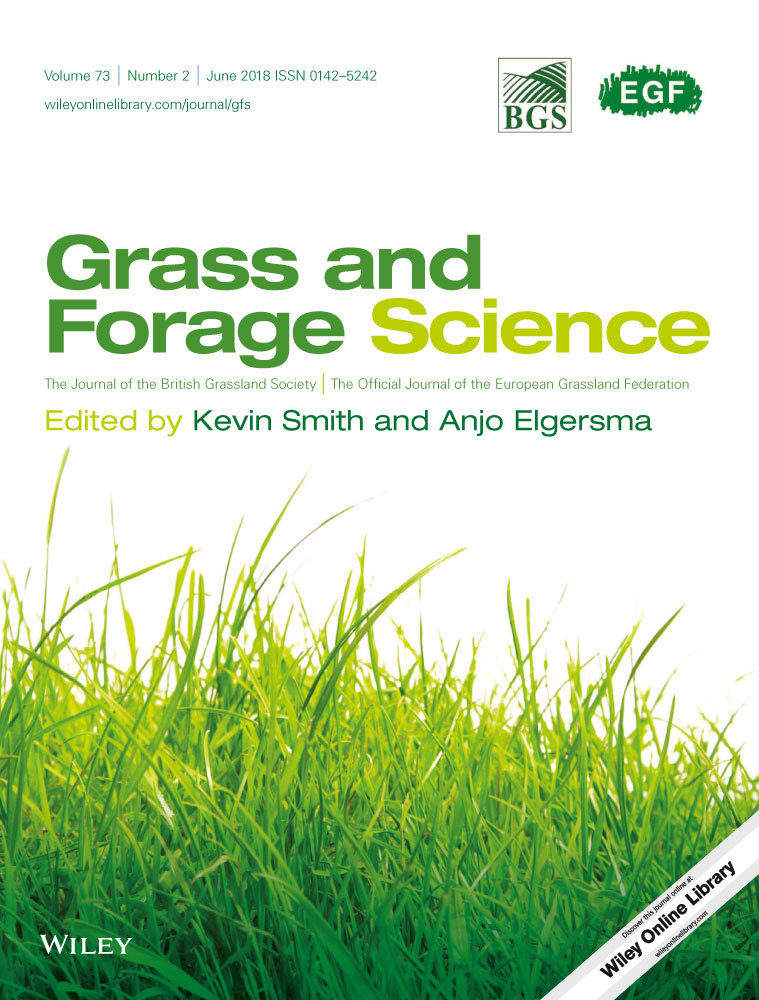Ver ítem
- xmlui.general.dspace_homeCentros e Institutos de InvestigaciónCIAP. Centro de Investigaciones AgropecuariasInstituto de Fisiología y Recursos Genéticos VegetalesArtículos científicosxmlui.ArtifactBrowser.ItemViewer.trail
- Inicio
- Centros e Institutos de Investigación
- CIAP. Centro de Investigaciones Agropecuarias
- Instituto de Fisiología y Recursos Genéticos Vegetales
- Artículos científicos
- Ver ítem
Malondialdehyde content as a potential biochemical indicator of tolerant Cenchrus ciliaris L. genotypes under heat stress treatment
Resumen
Buffel grass (Cenchrus ciliaris L.) is an important forage grass in arid and semiarid regions. As part of a genetic improvement programme, four genotypes [Biloela (Bl), Americana (Am), Texas (Tx) and Sexual (Sx)] were categorized by tolerance to heat stress in a greenhouse experiment. At 30 d after sowing, half of the plants (control plants) were transferred to growth chambers (28°C day per night), and the other half (pre‐treated plants, Prt) were exposed
[ver mas...]
Buffel grass (Cenchrus ciliaris L.) is an important forage grass in arid and semiarid regions. As part of a genetic improvement programme, four genotypes [Biloela (Bl), Americana (Am), Texas (Tx) and Sexual (Sx)] were categorized by tolerance to heat stress in a greenhouse experiment. At 30 d after sowing, half of the plants (control plants) were transferred to growth chambers (28°C day per night), and the other half (pre‐treated plants, Prt) were exposed to heat stress treatment (0, 24, 48 and 72 h; 45°C day per night). Malondialdehyde (MDA) content, an indicator of oxidative damage, was determined from foliar samples. During heat stress, Sx showed the earliest increase in MDA (at 24 h) followed by Tx (48 h) and Am and Bl (72 h). Results were compared with heat‐stress tolerance evaluated as morphological traits at the end of recuperation (60 d after sowing). Fresh weight and aerial plant height were lowest in the Prt‐Sx genotype and highest in Am and Bl genotypes; Tx showed intermediate tolerance. Results suggest that tolerance to heat stress in C. ciliaris genotypes could be related to the capacity for regulating the oxidative damage increase. Foliar MDA content might therefore be used in a genetic improvement programme of C. ciliaris as a potential biochemical indicator for a rapid, simple and low‐cost identification of heat‐stress tolerant genotypes.
[Cerrar]

Fuente
Grass and Forage Science 67 (3) : 456-459 (September 2012)
Fecha
2012-09
Editorial
Wiley
ISSN
0142-5242
1365-2494
1365-2494
Formato
pdf
Tipo de documento
artículo
Palabras Claves
Derechos de acceso
Restringido
 Excepto donde se diga explicitamente, este item se publica bajo la siguiente descripción: Creative Commons Attribution-NonCommercial-ShareAlike 2.5 Unported (CC BY-NC-SA 2.5)
Excepto donde se diga explicitamente, este item se publica bajo la siguiente descripción: Creative Commons Attribution-NonCommercial-ShareAlike 2.5 Unported (CC BY-NC-SA 2.5)

